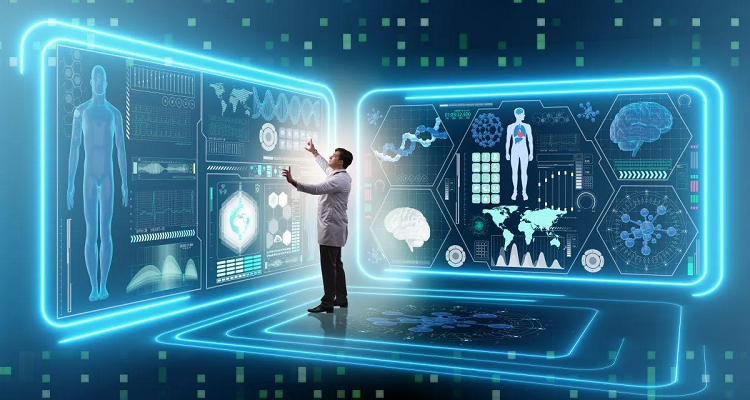Advantages of Earning a Designing Microsoft Azure Infrastructure Solutions AZ-305 Certification
About the AZ-305 Exam
The AZ-305 exam is intended for experienced professionals rather than beginners in Azure, serving as an expert-level assessment to validate their skills. It consists of 40-60 questions, each carrying an appropriate weightage towards the total score. The exam duration is 120 minutes.
The AZ-305 exam, designed by Microsoft, evaluates your understanding in the following areas:
What Level of Difficulty Does the AZ-305 Exam Present?
The AZ-305 certification is at an advanced level, making the exam challenging. Therefore, anticipate scenario-based questions rather than simple yes or no queries. You will be presented with unique situations and must provide the appropriate solutions based on those scenarios. Some questions may have multiple seemingly correct options, requiring you to select the most suitable one based on your assessment. This reflects the role of an Architect, who must make decisions based on specific organizational needs. For instance, when a company wants to host a web application, there are various options, such as a VM, an app service, a docker container in-app service, or a container image. Your task is to narrow the choices and select the most appropriate option according to the given requirements.
The positive aspect is that there are no penalties for incorrect answers. Therefore, it is advisable to take a chance and not leave any questions unanswered, even if you are unsure of the answer.
Microsoft AZ-305 Exam Preparation
Here are some invaluable tips to help you succeed in your AZ-305 Exam:
1. Understand the Exam Objectives
The first step to acing any exam is to understand its objectives. Familiarize yourself with the AZ-305 Exam’s syllabus, which includes various domains and their respective weightage. The official Microsoft webpage is an excellent resource for exploring the exam objectives.
2. Create a Study Plan
Crafting a well-structured study plan is crucial for adequate exam preparation. Allocate sufficient time for each domain based on its complexity and your familiarity with the topics. A study plan ensures you cover all necessary areas and helps manage your time efficiently.
3. Leverage Official Microsoft Learning Paths
Microsoft offers comprehensive learning paths tailored to specific certifications. These paths include free online courses, hands-on labs, and practice exams. Utilize these resources to better understand the exam topics and assess your knowledge through practice tests.
4. Hands-on Experience with Azure
While theoretical knowledge is essential, hands-on experience is equally vital for success in the AZ-305 Exam. Practice working with Microsoft Azure services, deploy solutions, and troubleshoot real-world scenarios. Practical experience will enhance your understanding and boost your confidence.
5. Practice Time Management
The AZ-305 Exam is time-limited, and managing time effectively is crucial. During your preparation, practice answering sample questions within the allocated time frame. This will help you become familiar with the exam’s pace and ensure you complete all questions during the actual exam.
6. Engage in Study Groups and Forums
Joining study groups and online forums with like-minded individuals can be incredibly beneficial. Discussing concepts, sharing insights, and seeking answers can reinforce your understanding and provide different perspectives on complex topics.
7. Review Azure Security Best Practices
Azure security is a vital component of the AZ-305 Exam. Ensure you thoroughly understand Azure security services, identity management, and best practices for securing cloud solutions. Microsoft’s documentation offers in-depth resources on this subject.
8. Familiarize Yourself with the AZ-305 Exam Format
Knowing the exam format beforehand can reduce anxiety on the test day. The AZ-305 Exam generally consists of multiple-choice questions, scenario-based questions, and interactive activities. Familiarize yourself with these question types and practice accordingly.
9. Take Practice Exams
Practice exams are excellent tools to assess your readiness for the actual exam. Several online platforms offer practice tests similar to the authentic AZ-305 Exam. Taking these practice exams helps identify your strengths and weaknesses, allowing you to focus on areas that require improvement.
10. Stay Updated with Azure Updates
Microsoft Azure continually evolves with new features and updates. Stay informed about the latest developments and changes in the Azure ecosystem. This knowledge will be valuable in answering questions related to the latest Azure services and functionalities.
Conclusion
Preparation is the key to success in the AZ-305 Exam. You can confidently approach the exam by understanding the exam objectives, creating a study plan, gaining hands-on experience, and using official Microsoft resources. Stay up-to-date with Azure updates, take mock exams, and participate in study groups to reinforce your knowledge.
Passing the AZ-305 Exam is not just about earning a certification; it’s about acquiring valuable skills and expertise in Microsoft Azure. Best of luck on your certification journey!








